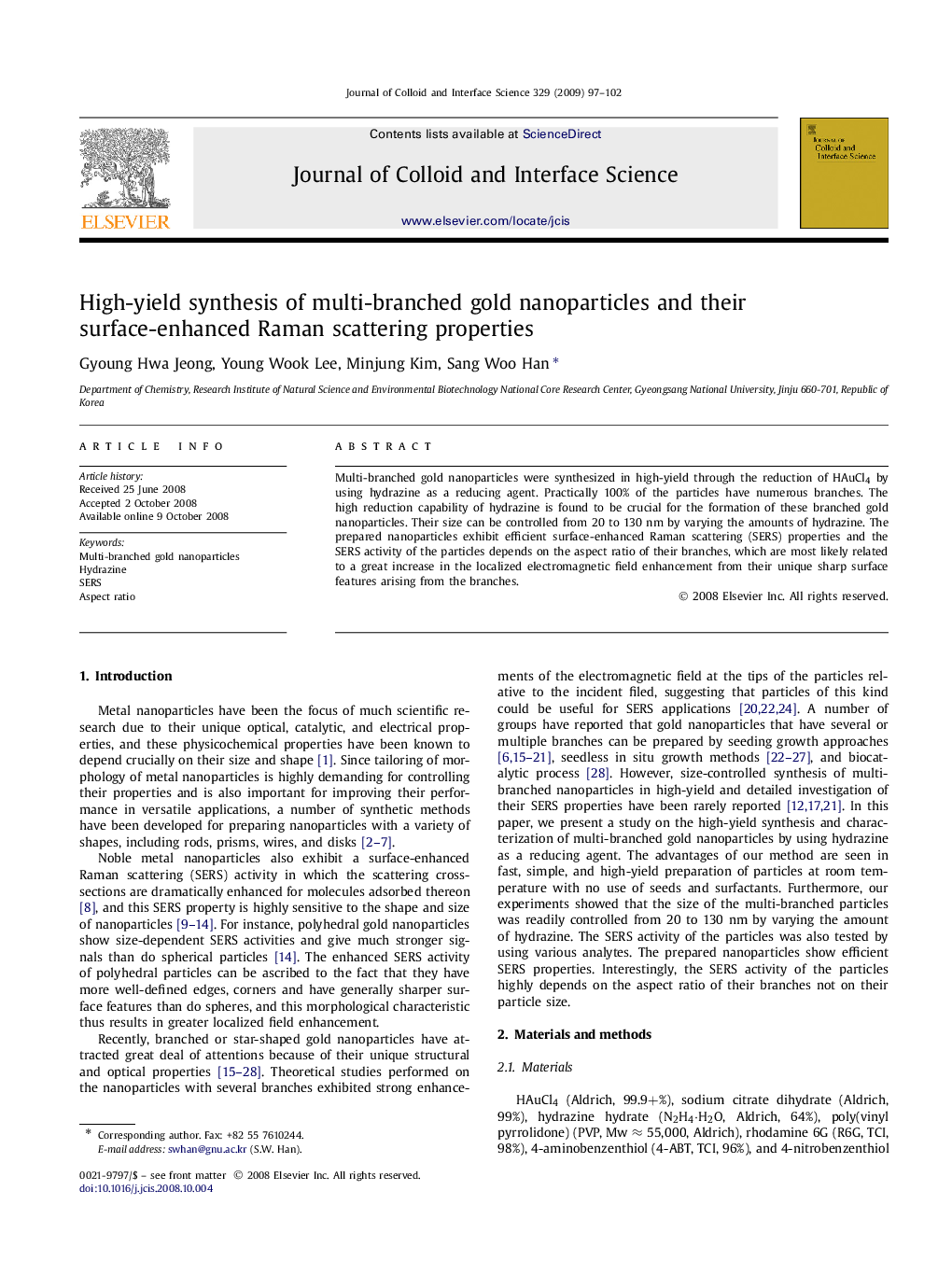| Article ID | Journal | Published Year | Pages | File Type |
|---|---|---|---|---|
| 611169 | Journal of Colloid and Interface Science | 2009 | 6 Pages |
Multi-branched gold nanoparticles were synthesized in high-yield through the reduction of HAuCl4 by using hydrazine as a reducing agent. Practically 100% of the particles have numerous branches. The high reduction capability of hydrazine is found to be crucial for the formation of these branched gold nanoparticles. Their size can be controlled from 20 to 130 nm by varying the amounts of hydrazine. The prepared nanoparticles exhibit efficient surface-enhanced Raman scattering (SERS) properties and the SERS activity of the particles depends on the aspect ratio of their branches, which are most likely related to a great increase in the localized electromagnetic field enhancement from their unique sharp surface features arising from the branches.
Graphical abstractMulti-branched gold nanoparticles with efficient surface-enhanced Raman scattering properties were synthesized in high-yield using hydrazine as a reducing agent.Figure optionsDownload full-size imageDownload as PowerPoint slide
